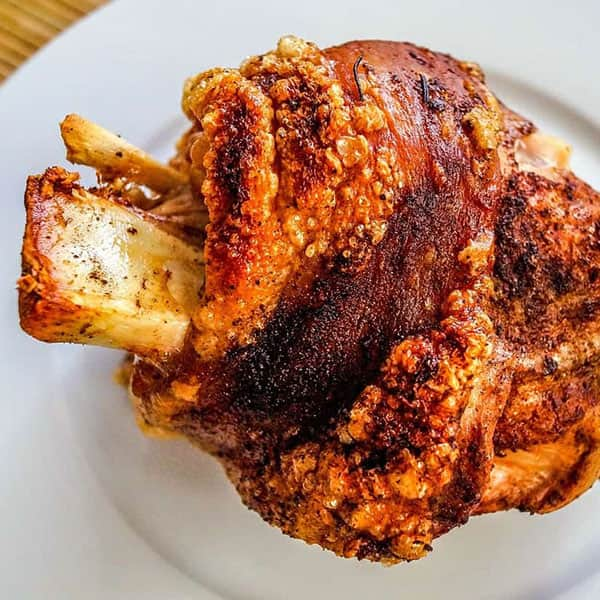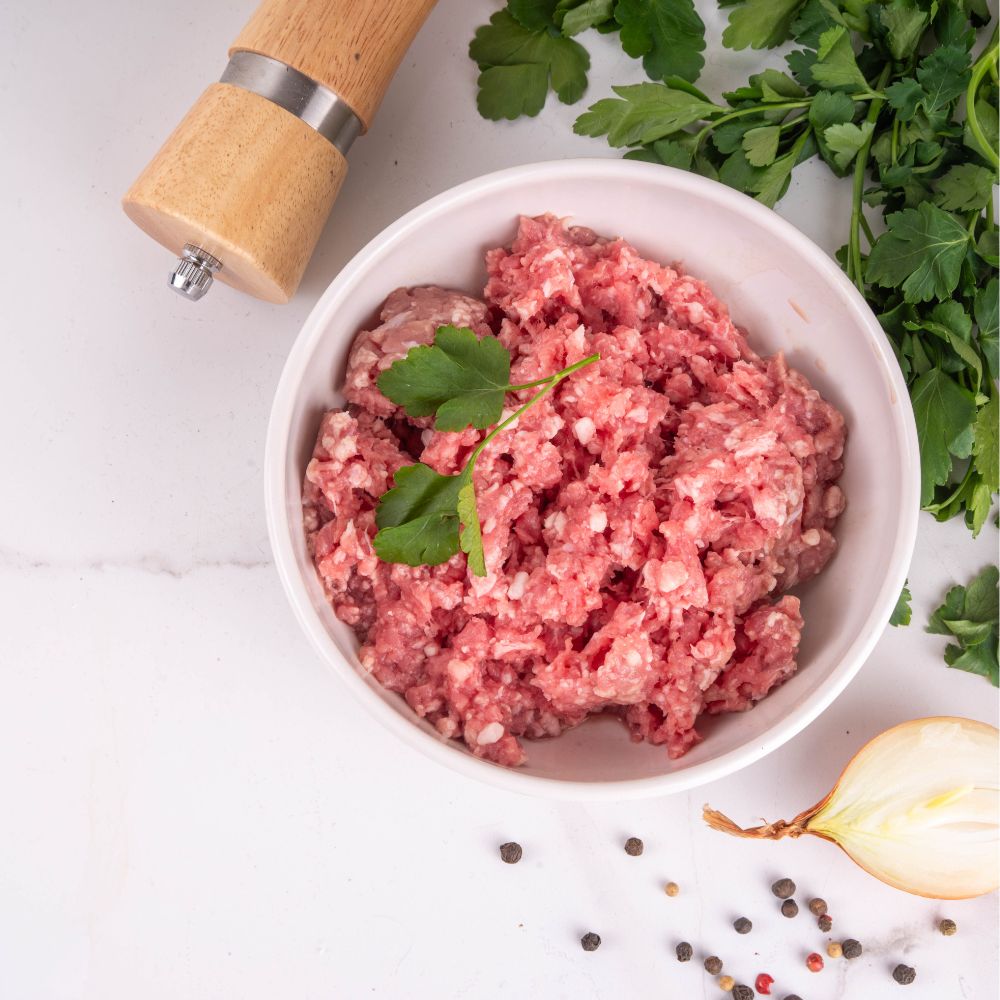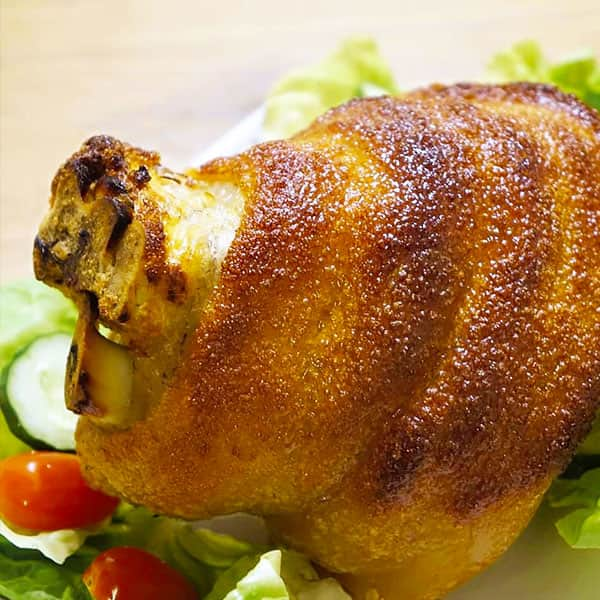Eisbein and Haxe – What’s the Difference?
Haxe, Hachse, Eisbein, Hämmchen, Wädli, or Stelze - the pork knuckle has many names. This popular rustic dish is a staple in traditional German and Austrian cuisine. But is there a difference between Eisbein and Haxe? Yes, there is. Let's take a closer look.
What Are Eisbein and Haxe and What Makes Them Special?
The Haxe is the lower leg of the pig. Both the front and hind legs are used. The meat around the bone is heavily marbled and surrounded by a thick layer of fat called the rind. The meat itself is popular for its tenderness and unique flavor. Pork knuckle is a must at Oktoberfest and is also a popular specialty in Austria. In northern Germany, however, the dish is enjoyed in a slightly different form. All preparation methods have their advantages, making Eisbein or Haxe a true delight.
Eisbein and Haxe – The Difference
The name depends on the regional vernacular and the preparation method. The main difference lies not only in the spices but also in the rind. Eisbein is traditionally cooked with the rind on, while with Haxe, the rind is removed.
Eisbein and Haxe – Difference in Preparation
As with many other dishes, there are various ways to prepare Eisbein and Haxe. You can grill, braise or boil the meat with the bone, creating hearty dishes each time. You don't have to stick to traditional recipes; you can put your own spin on it with different spice blends. Eisbein and Haxe are versatile dishes that you can adapt to your personal preferences.
The pork knuckle is without the rind and is roasted or grilled with various spices. The long cooking time gives the Haxe its characteristic aroma and crispy crust.
Eisbein is popular in northern Germany and is cured, which is not the case with the traditional Haxe. The curing layer can be removed before cooking. To do this, soak the Eisbein briefly in cold water and then rub off the salt thoroughly. Afterwards, the Eisbein with rind and spices is cooked in a stew pot, clay pot, or roasting pot – either in the oven or on the stove.
The Right Spices – Difference in Eisbein and Haxe?
Eisbein is traditionally cooked with carrots, bay leaves, salt, pepper, onions, and allspice and served with sauerkraut and potatoes. You add the spices to the broth and cook the meat in it. Depending on the recipe, you may add the sauerkraut directly to cook it together or prepare it separately. Before serving, remove the bay leaves and allspice berries.
If you want to grill the Haxe, the meat is also boiled beforehand. A typical South German or Austrian recipe uses juniper berries, pepper, salt, onions, and caraway seeds as spices. After cooking in the broth, the pork knuckle is roasted to a crisp in the oven. For extra flavor, you can marinate the Haxe before baking it. A hearty mustard marinade is popular, and versions with beer are also delicious.
What Are the Cooking Times for Eisbein or Pork Knuckle?
As it is a very marbled piece of meat with a thick bone, the cooking time is correspondingly long. It mainly depends on the size or thickness of the whole Haxe. You can expect about two hours for a pork knuckle weighing 500 grams raw in a cooking or braising pot. If you want to grill the Haxe in the oven afterwards, you can add another 30 minutes until the meat is crispy all around.
If you are unsure whether the meat is done, it's better to leave it in the pot or oven for a few more minutes. Taking the meat out too early will result in an undesirable texture – it may still be tough in some spots, which is to be avoided.
How to Tell if Eisbein or Haxe Is Done?
The best indication is when the meat easily separates from the bone. At this point, the meat is fully cooked, tender, and ready to eat. If you're unsure, test a small section to see if the meat separates from the bone. If it doesn’t, wait a few more minutes and try again.
Side Dishes for Eisbein and Pork Knuckle
In both northern and southern Germany, Eisbein or Haxe are often served with boiled potatoes and sauerkraut. There is no significant distinction in side dishes between Eisbein and Haxe. If you prefer simplicity, you can serve fries with it. A green salad completes the meal. In Berlin, pea puree is a popular side dish with Eisbein. As with all dishes, you can choose your own sides and tailor the menu to your preferences.
A Special Delight: The Bone Marrow
The meat can either be deboned and portioned after cooking or served as a whole with the bone. Regardless of your choice, the bone marrow is an additional delicious treat that many forget! Spread it on a good slice of rye or black bread and season it – the marrow is an exquisite delicacy. Try it out!





Leave a comment
This site is protected by hCaptcha and the hCaptcha Privacy Policy and Terms of Service apply.